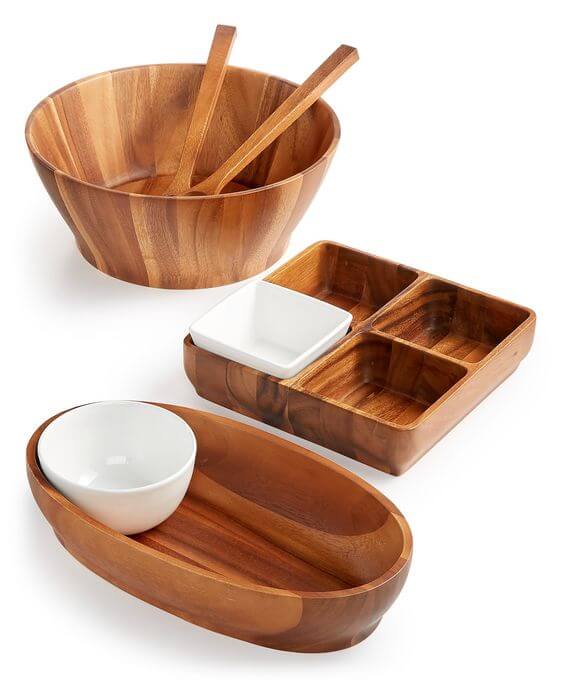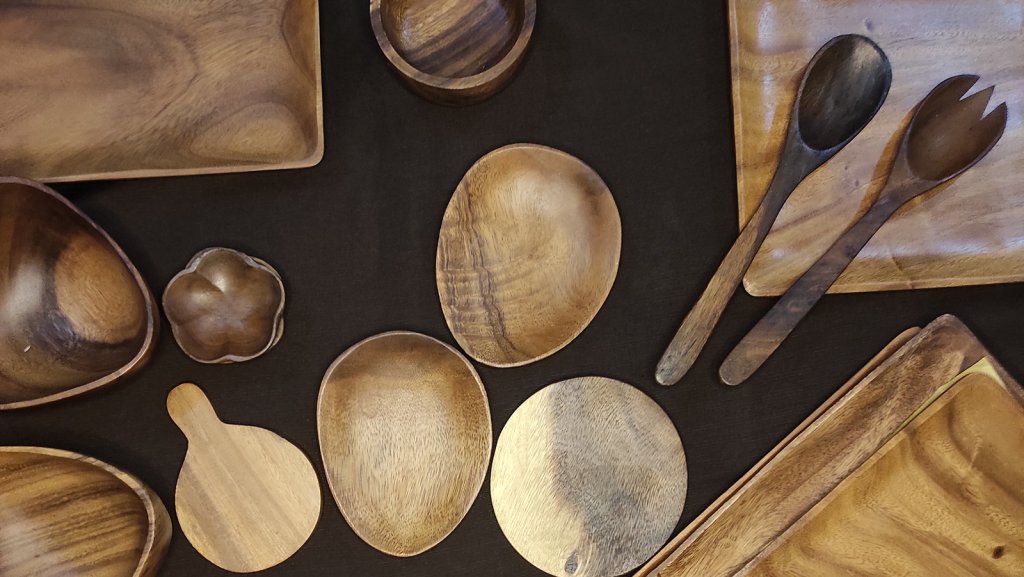The type of material used for cooking tools is very important in the world of culinary craftsmanship. Acacia is a wood that often comes up as an option because it is very durable and looks great. It’s becoming more popular to use acacia wood for many things, which makes us wonder if it’s good for cooking tools.
This article will help you uncover the unique qualities of acacia wood, tell you if it’s good for use in the kitchen, and walk you through the steps you should take to choose the best wood for your cooking tools.
Understanding Acacia Wood

Acacia wood, which comes from the acacia tree, is famous for having special traits that make it stand out in many uses. Acacia wood comes from parts of Africa, Australia, and Asia.
It has unique qualities that make it perfect for many things, like making kitchen tools. This article will go into more detail about the qualities that make acacia wood a popular choice for kitchen tools. It will give you useful information about its pros and cons when it comes to making kitchen tools.
Advantages of Acacia Wood for Cooking Utensils
1. Strength and Longevity
It is long-lasting, making acacia wood a great choice for kitchen tools that will last through daily cooking. The strong nature of it means that your tools will last for years, even if you use them a lot.
2. Resistant to Water
Acacia wood is naturally resistant to water because it contains oils. This natural resistance makes it less likely that your tools will blend, break, or grow mold or mildew. It makes them great for jobs that involve liquids or wet ingredients.
3. Aesthetic Beauty
In addition to its usefulness, acacia wood is praised for its beautiful looks. The grain design is very pretty and complicated, and the colors are usually warm and rich. The natural beauty of acacia wood gives your cooking tools a touch of class, making them look good and useful.
4. Eco-Friendly Profile
For many, sustainability is very important, and acacia wood can fit in with environmentally friendly choices if it is found responsibly. Ethical and sustainable forestry methods can be used to harvest it, which will have less of an effect on natural environments and help make the future greener.
5. Versatility in Design
Because acacia wood is so flexible, it can be used to make many different kinds of tools. Acacia wood can be carefully carved and shaped to fit your specific cooking needs and tastes, whether you like classic shapes that will never go out of style or ones that are one of a kind and made just for you.
With all these benefits, acacia wood makes a strong case for being used to make cooking tools. Its long-lasting nature, ability to fight the water, good looks, eco-friendliness, and flexibility in design make it a material that not only improves your cooking experience but also makes your kitchen tools last longer and look better.
Get the full picture: Discover the pros and cons of acacia wood in our comprehensive guide.
Considerations When Using Acacia Wood Cooking Utensils
1. Maintenance
Like all wooden tools, acacia wood needs to be taken care of properly. Use mild soap and water to wash your dishes by hand, and don’t soak them for long amounts of time. Apply a mineral oil that is safe for food every so often to keep their shine and keep them from drying out.
2. Avoid High Temperatures
Acacia wood can handle some heat, but it’s best not to expose it to high temperatures or use it for high-temperature tasks like deep frying.
3. Longevity
If you take good care of your acacia wood tools, they can last for many years. But they might start to show signs of wear and tear over time. Check your tools regularly for signs of cracking or splintering.
4. Food Safety
Most people think that acacia wood is safe to touch food. Still, it’s important to make sure that the tools are made from acacia wood that is safe for food and hasn’t been finished or treated with chemicals that are bad for you.
Conclusion
Acacia wood is a great material for making cooking tools because it is long-lasting, doesn’t absorb water, and looks nice. But it’s important to know what could go wrong, like how sensitive it is to high heat and how much care it needs.
When choosing acacia wood kitchen tools, you should consider your unique cooking needs and weigh the pros and cons of the wood. Acacia wood tools can make your cooking experiences better and add a touch of natural beauty to your kitchen if you take the right care and safety measures.
Frequently Asked Questions
Can Acacia Wood Tools Take on The Smells or Tastes of Food Over Time?
Because the grain in acacia wood is dense and tight, it doesn’t absorb food smells or tastes very well. But it’s important to clean the utensils well after each use and let them dry fully in the air so that the food stays fresh and doesn’t smell bad.
Are There Certain Foods or Ways of Cooking that Acacia Wood Tools Work Best With?
Tools made of acacia wood are very useful and can be used for many different types of cooking and meals. They work great for pouring, stirring, and flipping. They are sensitive to high temperatures, though, so it’s best not to use them for high-heat tasks like cooking or frying.
Be sure to check out these other posts for more fascinating insights

